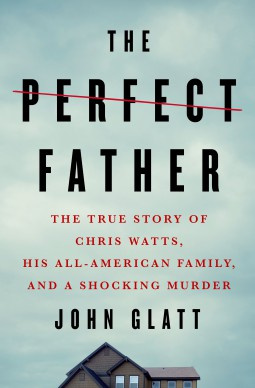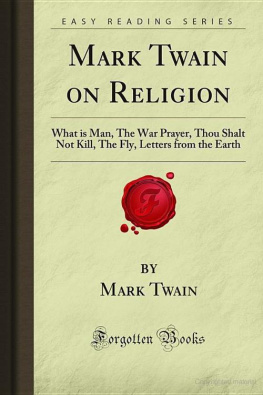The Sacrificial Lamb
He that smiteth a man, so that he die, shall be surely put to death.
Exodus 21:12
The murder plot was as elaborate and gruesome as a classic Alfred Hitchcock film. Yet with all the bizarre twists and turns of a film noir, the case of Pastor John David Terry was far darker than anything a horror writer could have dreamed up.
Desperate to start a new life, the Reverend John David Terry murdered his handyman, cutting off the victims headand, to avoid proper identification, his tattooed armin the hope of having the body mistaken for his own. For good measure he set his church on fire with the mutilated corpse inside.
The Nashville minister decided to walk out of his life in late February 1987, after being turned down for a long-awaited promotion to bishop. His late father, Bishop John C. Terry, had once held the same position, so the younger Reverend Terry, who was known as David, had taken it for granted that he would get the job. Apart from seeking the prestigeof being a Pentecostal bishop, he was eager for the new jobs $75,000 salary, a fortune compared to the meager $35,000 he was making as pastor of the Emmanuel Church of Christ Oneness Pentecostal.
When the reigning bishop, Rob Roy Banks, decided the ambitious young pastor was not worthy of following him, the Reverend Terry decided to get even by embezzling $50,000 realized from the sale of a parsonage. And when he thought he might be caught and shamed in front of his congregation he decided to fake his own death and start a new life away from the churchand his devoted wife and children.
I reached a point in my ministry where I felt like a complete failure, Terry would later say in a futile attempt to explain and justify his bizarre plan. The church wasnt growing and I thought it was my fault.
The Reverend John David Terry was just forty-three years old but he looked at least ten years older. His thick, metal-framed spectacles weighed heavily down on his wide nose, giving him a haunted look. And in the months prior to his crime the greedy clergyman had ballooned up to 220 pounds, a gain of at least thirty pounds, and was very self-conscious about the weight gain. In an attempt to look younger, the vain minister wore a thick black toupee to conceal his baldness.
Following in his tyrannical fathers footsteps, the introspective young David Terry had joined the Pentecostal church after failing to get a college degree. At his 1962 graduation from Nashvilles East High School, his year book motto had eerily predicted,Life is short; death is at hand. Ill enjoy it while I can.
Growing up, Reverend Terry lived in fear of his father, who constantly criticized him, saying he would never amount to anything. So the wounded, timid youth turned to his mother, Pauline, to confide his growing insecurities. When his first marriage ended in divorce, his choice for a second wife, Brenda, had to be approved by his mother prior to the marriage.
The Southern Pentecostal church offered a ready-made career and safe haven to the insecure young man, who fed off the congregations respect to bolster his self-confidence. For fifteen years he served the eighty-member congregation faithfully and was popular among parishioners for his hard work. But he was living a lie, projecting a self-confidence he didnt feel.
He was the beloved David, said Reverend Terrys church colleague and friend, Reverend Ronnie Banks, who would eventually take over from his father as bishop. Brother David had real charisma and the people would melt in his hands. But the truth was that he had extremely low self-esteem and no confidence in himself.
The Reverend David Terry compensated for his perceived inadequacies by deliberately trying to impress his blue-collar flock. Putting enormous stock in keeping up appearances, he always made sure his yard was spotless and his four young children were always clean and well-dressed. He liked to reward their good grades with little cash presents, believing their success at school directly reflected on him. His wife Brenda was a meek butfaithful homemaker who would never dare to question him.
The behavior Reverend Terry employed to impress his congregation led his colleagues and neighbors to regard him as eccentric. He always refused to wear shorts during the steaming hot Nashville summers, insisting on wearing long pants even to cut his lawn.
As his strict religious beliefs disavowed any kind of sport, the Reverend Terry would not attend games to watch his eldest son, John David, Jr., who was a star high school football player.
Strangely, he did not forbid the boy to play, again thinking his sons success reflected on him. Even more embarrassing for the young boy was the ministers refusal to attend the schools father/son football banquet.
The seemingly pious minister gave far more of himself to his congregation than he did to his own family. He was always on hand to lead the singing at weddings, hold expectant fathers hands in hospital hallways and be supportive at funerals.
When his mother died in the mid-1980s, Reverend Terry lost his emotional anchor and began to drift badly. He felt he couldnt talk to his wife about the increasing chasm between his deep feelings of worthlessness and what was expected from him as a church leader.
Deeply depressed after his mothers death, Reverend Terry turned to his friend Reverend Banks for advice when they traveled to Memphis together to visit a Bible college.
He shared his problems with me, said Banks, who is now a bishop. He just didnt have anyoneto talk to. I didnt understand what was happening to him at the time. In hindsight I see that everything stemmed from when my dad did not step down as Bishop in favor of David. Even then David was plotting and scheming to be free.
Secretly ambitious, the pastor had expensive tastes and found it a constant struggle to survive on his salary. To supplement his income he dabbled in selling real estate and worked part-time as a butcher, which was his trade prior to taking up his ministry.
His downward spiral truly began when he secretly sold the church parsonage. His fear of being caughtnot shame over the deed itselfgave birth to desire.
One day in a magazine shop near his east Nashville home, he happened to pick up the mercenary-warriors magazine, Soldier of Fortune , and started thumbing through it. Suddenly he noticed an ad explaining how to disappear and find a new identity.
It just jumped out of that page, he would later explain. How to get lost how to disappear.
The preacher became obsessed by the idea of staging his own disappearance and adopting a new identitya new persona. He could think of nothing else, with the idea becoming more and more seductive. He started spending days in the library going through old newspapers to research possible candidates for his new identity.
Initially Reverend Terry had planned to become Ronnie Alderson, a childhood friend who had drowned at the age of six. But he abandoned the plan when he ran into difficulties obtaining the personaldetails needed to secure a birth certificate.
Then during a visit to Mount Olivet Cemetery he noticed the tombstone of a young boy named Jerry Milsom, who had drowned at age seven on July 23, 1951. Terry was struck by the fact that the dead boy had been born on July 8, 1944just three days before Terrys birth.
Going back to the library the minister found a newspaper account of Milsoms tragic drowning, which had also claimed the life of his father, who had tried to save him. The pastor carefully photocopied the story and obituary and used the dead boys personal details to get copies of his birth certificate, which he used to obtain a Social Security number and a drivers license. It occurred to him that there was something almost Christ-like about his resurrecting this tragic young child.
















